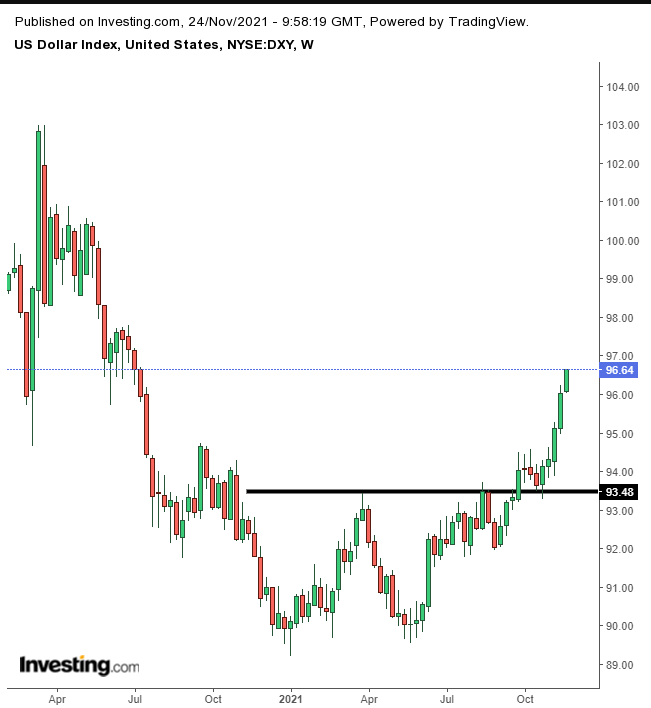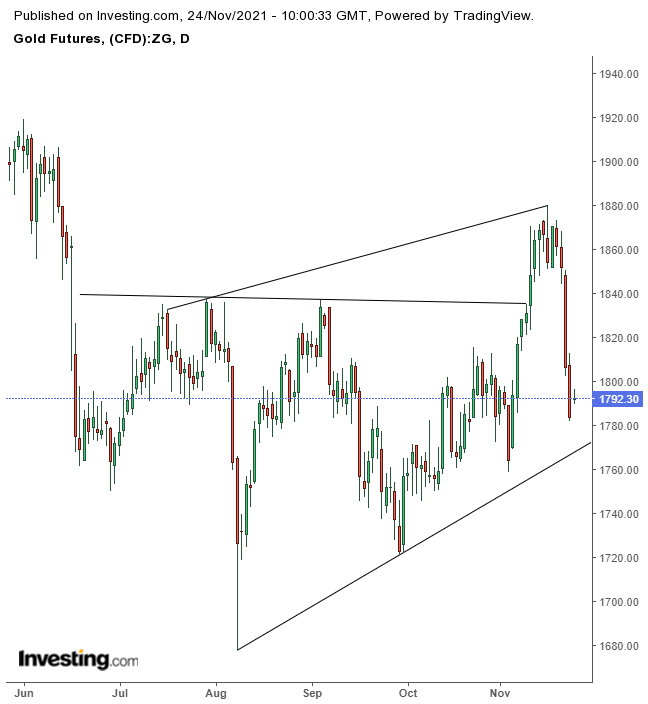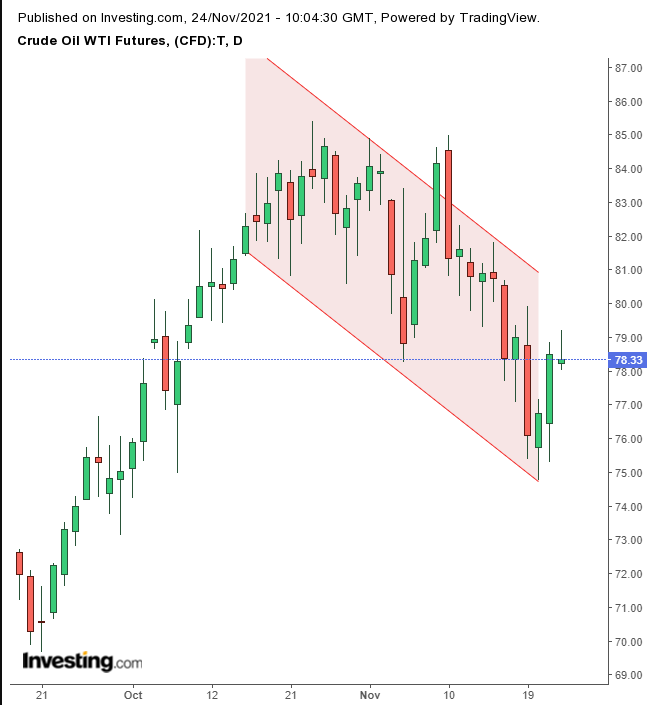- Market attempts to pick direction ahead of Fed minutes
- Europe gains with higher oil prices
- Bitcoin struggles
Key Events
Futures on the Dow, S&P, NASDAQ and Russell 2000 fell in trading on Wednesday as traders' expectations for faster monetary tightening by the Fed were dented by the moderate approach from New Zealand's central bank—rates were hiked just 0.25% despite inflation there hitting 4.9% in Q3. Analysts expect New Zealand's interest rate to reach 2% next year. Meanwhile, European markets rose with oil stocks.
Gold recovered.
Global Financial Affairs
It is unusual to see such a difference in direction between US and European markets, but in some instances, markets in each area respond to different events.
All four US contracts were in the red as traders there are awaiting the publication of the FOMC minutes later today to see if there is any additional clarity on the timing of future rate hikes.
In Europe the STOXX 600 opened 0.1% higher and extended gains up to 0.55%. The pan-European gauge rebounded from its worst session in almost two months on Tuesday. It ended a four-day straight slide which was driven by rising coronavirus cases across the continent and the prospect of higher interest rates to try and curb inflation.
Oil stocks were some of the best performers in European markets, rising almost a full percentage point, tracking rising crude prices. The rally in oil prices was a vote of no confidence in President Biden's decision to lead a coalition of major oil consuming countries to tap into emergency reserves in order to increase supply and reduce prices.
Miners jumped 1.2%, following rising copper prices on an improved outlook for Chinese demand.
The Asian market provided mixed results, as investors were grappling with the outcome of Jerome Powell's renomination as Chair of the US Federal Reserve and its implications on monetary policy in the face of the highest inflation in 30 years.
Japan's Nikkei 225 was dragged down 1.58% by a slide in growth stocks, underperforming its regional peers.
The Dow Jones New Zealand surged over 0.7% as it ended a six-day losing streak on the measured interest rate hike.
US stocks advanced with economically sensitive sectors yesterday, at the expense of tech stocks after yields moved higher, which stifled the rally for growth stocks.
The S&P 500 closed higher at the end of a volatile day. Energy and Financial stocks outperformed amid a reflation trade.
The Dow Jones added 0.55% of value, leading the major US indices. However, the advance may be a final attempt before a reversal.

The index may be forming an H&S top.
Powell's remaining the Fed chief intensified bets for higher interest rates sooner, leading to a selloff in Treasuries. However, yields on the 10-year Treasury note were off their lows, but still lower.
The dollar reached the highest since July 9.

The move extended the breakout from the double bottom.
Gold rebounded, ending a four-day selloff, but after blowing out an H&S bottom.

The yellow metal may have found support at the bottom of a rising channel.
Bitcoin is struggling to find direction.

Bulls are grabbing onto the level where the cryptocurrency previously found support.
Oil prices fluctuated as investors were weighing a conflict between producers and their biggest customers.

The price gave up an advance as it neared the top of its falling channel.
Up Ahead
- The Bank of Korea announces its policy decision on Thursday.
- US equity and bond markets are closed on Thursday.
- On Thursday, German GDP is published.
Market Moves
Stocks
- The STOXX 600 rose 0.4% as of 8:38 a.m. London time
- Futures on the S&P 500 were little changed
- Futures on the NASDAQ 100 were little changed
- Futures on the Dow Jones Industrial Average were little changed
- The MSCI Asia Pacific Index fell 0.4%
- The MSCI Emerging Markets Index was little changed
Currencies
- The Dollar Index was little changed
- The euro was down 0.26% at $1.1216
- The Japanese yen down 0.07% to 115.03 per dollar
- The offshore yuan was little changed at 6.3912 per dollar
- The British pound was little changed at $1.3368
Bonds
- The yield on 10-year Treasuries declined two basis points to 1.64%
- Germany's 10-year yield fell one basis point to -0.23%
- Britain's 10-year yield was little changed at 0.99%
Commodities
- Brent crude rose 0.3% to $82.57 a barrel
- Spot gold rose 0.2% to $1,792.13 an ounce
